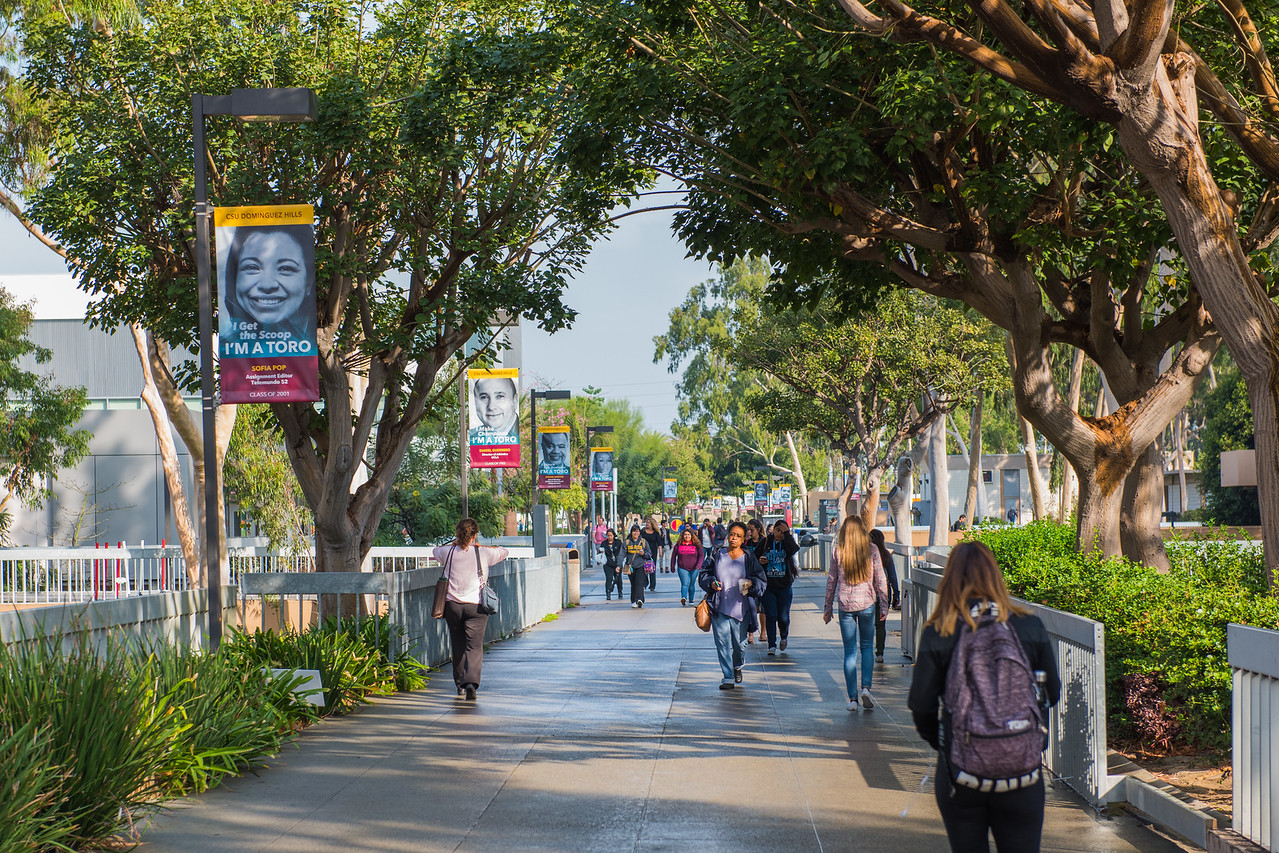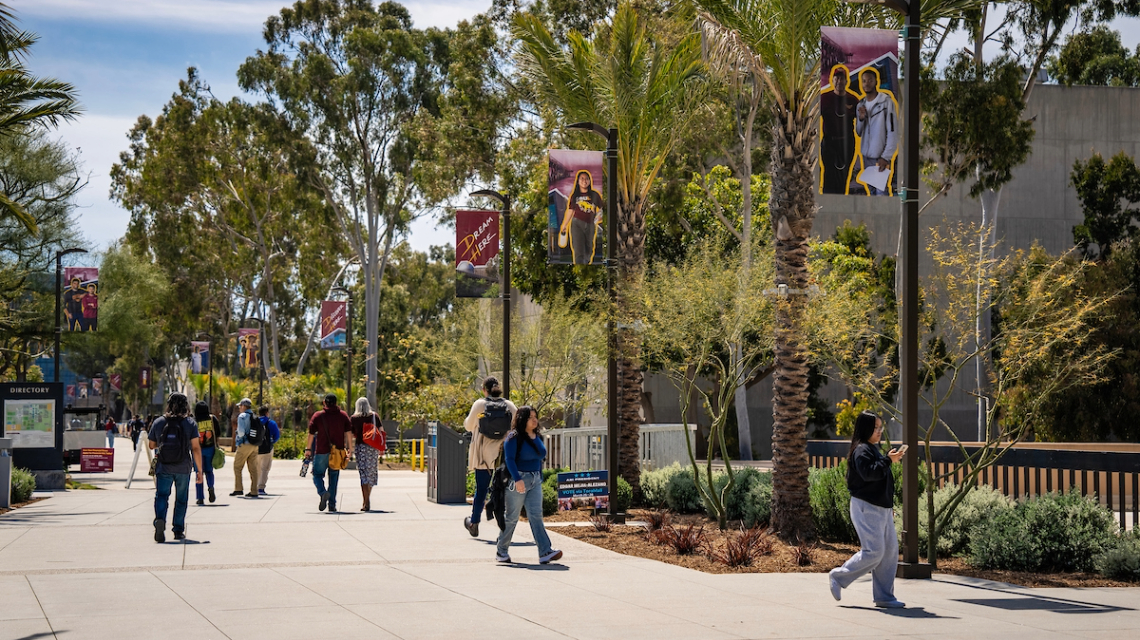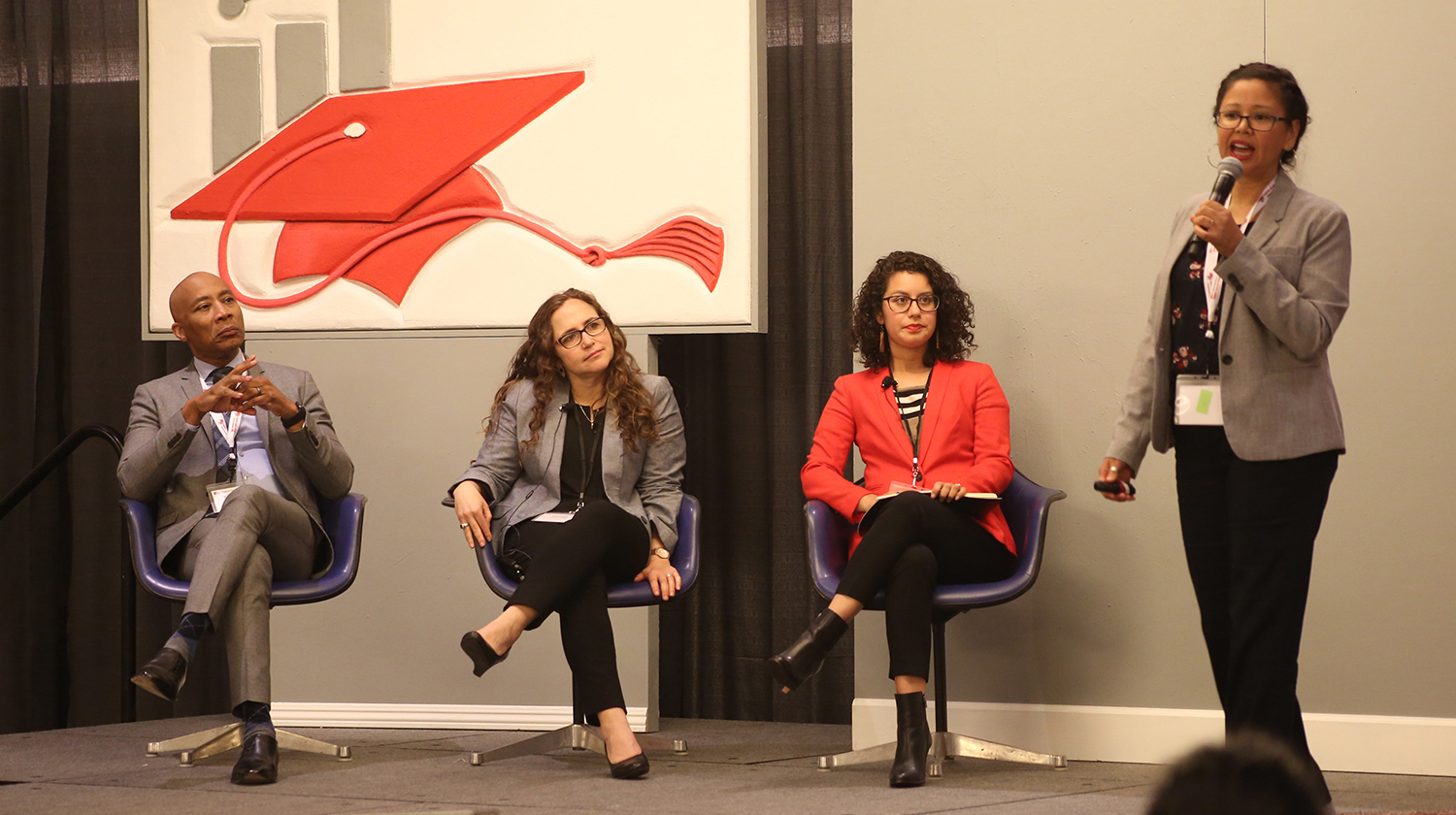
Source: EdSource
A new initiative aims to increase the number of students transferring from community colleges in Los Angeles County to two of the county’s California State University campuses.
A coalition of nonprofit organizations, called the Los Angeles Postsecondary Education Funders Collaborative, announced Thursday that they will award $550,000 in grants to CSU Dominguez Hills and CSU Northridge, with the goal of helping more students transfer to those campuses from eight community colleges in the county. Of that grant money, $300,000 will go to Northridge and $250,000 to Dominguez Hills.
With five CSU campuses and 21 community colleges in LA County, students often encounter roadblocks when they try to transfer, said Bill Moses, a managing director for the Kresge Foundation, one of the eight organizations funding the initiative. “There are lots of students who would like to transfer but who don’t have a clear way to do so,” he said.
The CSU campuses were selected because of their proposals to tailor their efforts to low-income students, first-generation students and students of color, who all already enroll in high numbers at those campuses, said Kelly King, senior program officer at the California Community Foundation, one of the other organizations funding the grants.
CSU Northridge and Dominguez Hills also “had really clear plans of what they were already doing and what they wanted to do more of” to increase transfer rates from their nearby community colleges, King said.
The grant money will fund supports such as providing emergency aid to students to continue their education and launching a peer mentoring program between transfer students and prospective transfers to help them navigate the transfer process.
Under the new initiative, CSU Northridge will collaborate with LA Mission College, LA Pierce College and LA Valley College. CSU Dominguez Hills will work directly with Compton College, El Camino College, West LA College, LA Harbor College, and LA Southwest College.
After the onset of the coronavirus pandemic last year, the coalition of nonprofits sought proposals from CSU campuses that wanted to come up with new approaches to help students transfer from community colleges. The coalition wanted to work with CSU campuses because they are “the foundation of bachelor’s degree attainment” in California, King said.
Northridge plans to create a new system of communicating with potential transfer students to make sure they are informed about what is required of them if they want to transfer, such as the courses they need to take. How the campus will communicate with those students has not yet been determined, but it will involve reaching out directly to them.
“One of the challenges with trying to get people to transfer is that students often have pretty busy lives,” Moses said. “They have families, and they don’t necessarily have a lot of time to do a lot of research to find out what are the best pathways. What courses are going to transfer? The idea is to try to get someone through college as fast and efficiently as possible. So this outreach is really critical.”
Another way CSU Northridge plans to use its grant money is by piloting a new peer mentoring program called the Matador Peer Transfer Guide Program. Students who have already transferred to the campus from one of three community colleges – LA Mission College, Pierce College or LA Valley College – will mentor prospective transfer students at those campuses and guide them through the transfer process, such as by helping them know what classes to take and how to access student support services on campus.
CSU Dominguez Hills plans to make it easier for community college students who are prospective transfers by allowing them to access resources on the Dominguez Hills campus that are typically reserved only for enrolled students.
For example, a student at LA Southwest College interested in majoring in chemistry would be able to access counseling services at the Dominguez Hills campus to find out which classes are required at the community college level to be eligible for transfer into that program.
Both CSU campuses will also use their grant awards to provide financial aid to students who are seeking to transfer from a community college but are facing barriers that prevent them from doing so. A student may need to replace a defective computer, for example, or may need funds for transportation and child care.
“They’ll be able to provide emergency aid, not just to students once they’ve transferred to the CSU, but to community college students at these feeder campuses who are at the cusp of being transfer-ready but something is standing in their way,” King said.








